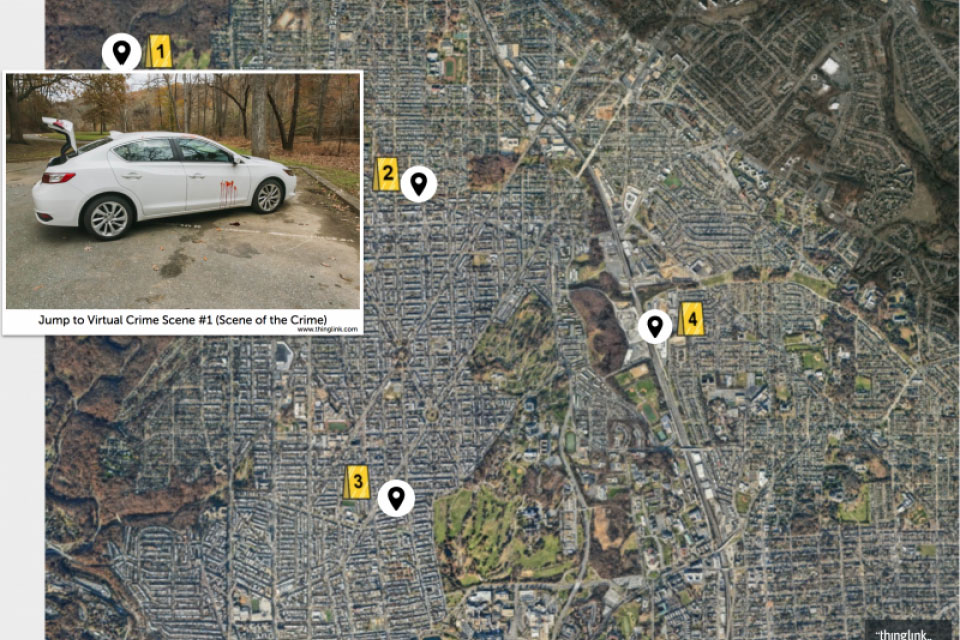Students in the police and security studies bachelor’s degree program at George Washington University can now tap into a virtual crime scene as part of their online curriculum.
Inside Higher Ed reported on the cutting-edge technology use, exploring the features and effectiveness as part of a reoccurring series that examines the successes and struggles of technology initiatives in classrooms.
GW decided to explore using virtual reality to improve the online learning experience, especially the tactile component. Cody House, instructional designer in the College of Professional Studies, along with videographer Drew Santorello, gradually developed a complex virtual crime scene and evidence lab, built from more than 200 360-degree photographs.
They worked with program director, Jeff Delinski, to find the right approach. They wanted to avoid it feeling like a video game or a Dateline re-enactment, and carefully considered the cost-benefit analysis of the project. They wanted students to be able to use the virtual reality glasses, but didn’t want the excitement of the immersive technology to distract from the lesson.
Students are now able to explore the crime scene, analyze evidence and discuss their findings with faculty and classmates. They are continuing to expand the project and explore the best technology to further develop the interactive curriculum.


